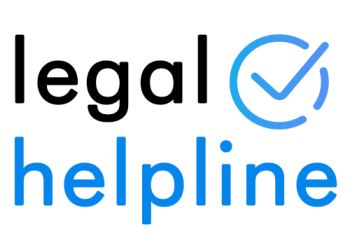The risks of manual handling, if not properly mitigated, can potentially result in an injury to an employee. Not only may an employee experience pain and suffering as a result, but there may also be a financial impact, such as loss of earnings if the injured employee is required to take unpaid time off work.
If you have suffered injuries from manual handling because your employer did not fulfil their duty of care, then you may be eligible to claim compensation. In this guide, we’ll discuss manual handling claims, the key steps to making a claim and the common causes of a manual handling accident.
Also, we’ll talk about potential compensation payouts for a successful manual handling injury claim. We’ll also discuss the benefits of claiming with the help of a No Win No Fee solicitor.
You can contact our team for free today for advice on making a claim for manual handling injuries. To get in touch, you can:
- Call us on 0333 000 0729
- Contact us online.
- Use the live chat feature.
Jump To A Section
- Common Causes Of Manual Handling Injuries
- When Could You Make A Manual Handling Claim
- Proving Manual Handling Claims
- Manual Handling Claims – Example Compensation Payouts
- Manual Handling – No Win No Fee Claims
- Helpful Resources And Links
Common Causes Of Manual Handling Injuries
A manual handling injury may be sustained when someone attempts to lift or move something only using their hands. Many manual handling accidents occur in the workplace and can be due to a variety of different causes. Often, these injuries result in manual handling claims.The most common causes of suffering from a manual handling injury are:
- Lifting – Lifting an item that is too heavy is probably the most common out of all the possible causes.
- Reaching and Lifting – Trying to lift or move an item that is too out of reach to do it safely.
- Repetitive Movements – Consistently lifting and moving items in a repetitive movement whilst using poor technique and having an incorrect posture.
- Lowering, Pushing and Carrying – Having poor posture and using the incorrect technique will more than likely result in an injury.
These types of accidents can happen in a variety of different environments, but often occur more so in care homes, warehouses and places of manual labour such as on building sites or in factories.
When Could You Make A Manual Handling Claim?
To claim compensation, your case must meet the manual handling claims criteria. This means you need to prove that negligence occurred. This happens when:
- You are owed a duty of care
- This duty is breached
- As a result, you are injured
While working, all employees are owed a duty of care by their employees under the Health and Safety at Work etc. Act 1974 (HASAWA). This means that they need to take all reasonably practicable steps to ensure that you are safe while carrying out your duties.
The steps that your employer is expected to take to uphold this duty can vary between industries. When it comes to manual handling, upholding this duty can include undertaking risk assessments and providing free and adequate personal protective equipment (PPE) such as steel-toed boots.
If you’ve suffered a manual handling injury as a result of your employer failing to uphold their duty of care, contact our team today.
Proving Manual Handling Claims
Before starting manual handling claims, there are a number of steps you can take to begin to build some evidence that supports your claim. Once you have the initial evidence, you can then start to build on your case using the evidence as to the initial foundations of your claim. Proving liability is a must for a successful claim, so adhering to as many of the following steps as possible will help do this.
- Photos – If possible, take photos of where the accident took place and of the situation that resulted in the accident. Also, take photos of any visible injuries as proof of your pain and suffering.
- Medical Report – See a medical professional before doing anything else. This is certainly most important for your health and to ensure you receive treatment as soon as possible. But also, as mentioned above, a thorough assessment of your injury is very important in determining the amount of compensation you should be awarded.
- Witnesses – Gather the contact details of any witnesses so that a statement may be obtained if necessary to support your claim. Witness statements are often worth their weight in gold in these types of cases.
- Expenses – Keep any receipts and evidence of expenses incurred as a direct result of your injury.
Once you have gathered as much of the initial evidence as you possibly can, contact a legal firm such as ours for professional help and advice.
If you choose to contact our firm, Legal Helpline, we will initially offer you a free consultation so we can gather all the facts about your case. This also provides a chance for you to ask any questions you may have regarding manual handling accidents, manual handling claims and the like.
Once we have all of the facts, we can decide if you have a legitimate case, and if so we will offer to take your case on for you on a no win no fee basis. If we don’t feel you have a legitimate case, or that it is unlikely to be successful, we will always be honest and tell you.
With your agreement, we can then begin to dig deeper and gather more evidence in support of your claim and start to build a strong winning case. We may also offer you a free, local medical if we feel it could be of benefit.
Manual Handling Claims – Example Compensation Payouts
There are a number of components that make up the final settlement amount awarded when making manual handling claims. The main components are:
- General Damages – These are in relation to the pain and suffering you have endured at the time of and since the initial injury. The severity of the injury both physically and mentally and any short and long term effects determine the amount awarded.
- Medical Expenses – Any expenses incurred such as prescription fees or private medical care costs for example, as a direct result of your injury can be included in your claim. Make sure to keep all receipts as evidence.
- Travel Costs – As with medical expenses, any travel expenses incurred as a direct result of your injury can be included. This also includes extra costs such as vehicle adaptions or the purchase of a specialised disability vehicle.
- Care Claim – If you have needed help whilst you recover, the person helping you can make a claim too.
- Loss of Earnings – Make a note of any loss of earnings or potential future earnings as a direct result of your injury as this can be included.
As you can see, there is more than just the physical injury itself that affects the final settlement amount of compensation to be given, and most of these things are unique to the claimant and their individual circumstances. Therefore, we’d be lying if we told you exactly what you would receive if your case was successful as it would be impossible to know at this stage.
Manual Handling – No Win No Fee Claims
At Legal Helpline, we offer a No Win No Fee service. This basically means that you will not be required to pay any of our legal fees if we do not win your case for you. We will only take payment if we win your case and this is taken as a small percentage of your compensation award amount.
Manual handling claims may take several months at least to come to a conclusion resulting in some very large legal fees. We understand that not everyone is in the financial situation where they can afford to pay on-going legal fees over several months especially if they are unable to work due to their injury, and with no guarantee of a win until the end, paying for a personal injury claims solicitor could have devastating consequences of the claimant’s finances if they were to lose, or the claimant could even run out of available money before the case even comes to an end and then having to abandon their claim after having spent all their money. When using a pay as you go solicitor, you are taking a huge gamble with your finances.
With our no win no fee service, there are no up-front costs, and there is certainly no financial gamble.
Regardless of whether you are just looking for some free help and advice, or whether you are considering hiring a legal team to make a compensation claim on your behalf, call Legal Helpline today on 0333 000 0729. A member of our team will answer your call and endeavour to help you as best they can.
Helpful Resources And Links
Manual handling guide – government pdf: This gives guidance on manual handling and what you should do to prevent accident s from occurring.
Back pain – NHS: This is the NHS guide on back pain, what may cause it, how to prevent it and treatments and much more.
- Claiming compensation for an accident at work
- Claim compensation for slipping at work and hurting your back
- How to make an NHS accident at work claim
We hope you have found this guide helpful. If you would like to speak to an advisor about manual handling claims or other types of accident at work claims, then please contact Legal Helpline online or on the phone today.
Author
-
Tracy Chick is a dedicated and expert Road Traffic Accident lawyer, holding a prestigious MASS Diploma in her field. When she's not immersed in the complexities of legal cases, Tracy loves to be outdoors, particularly enjoying any kind of water-related activity.
View all posts Road Traffic Accidents Lawyer







